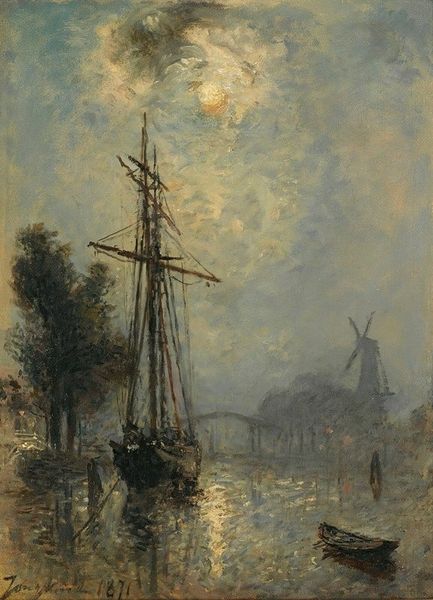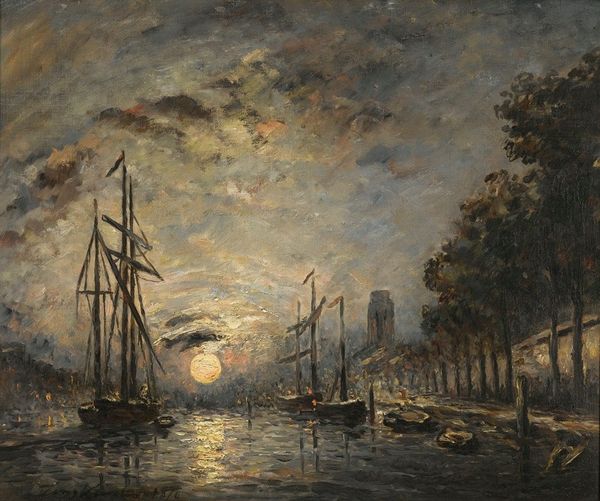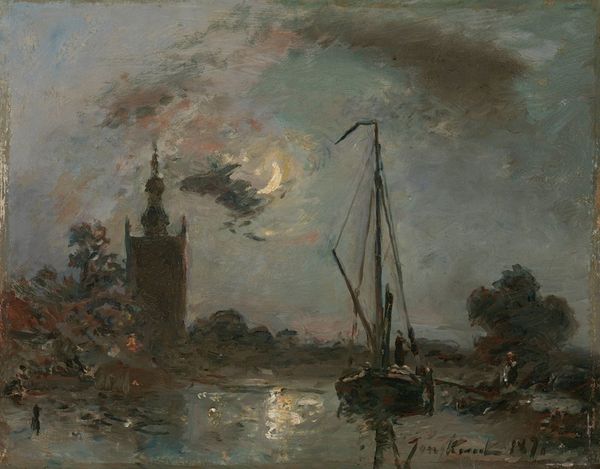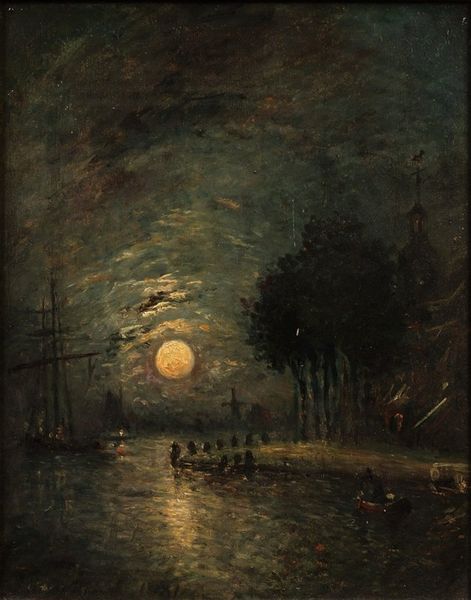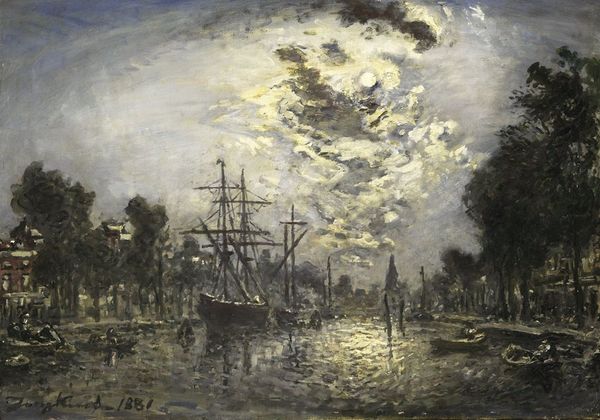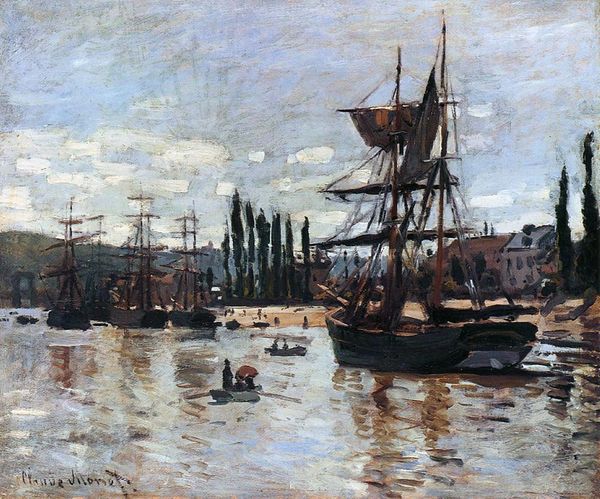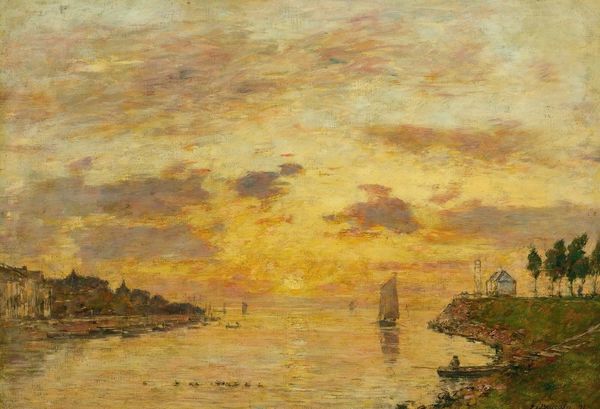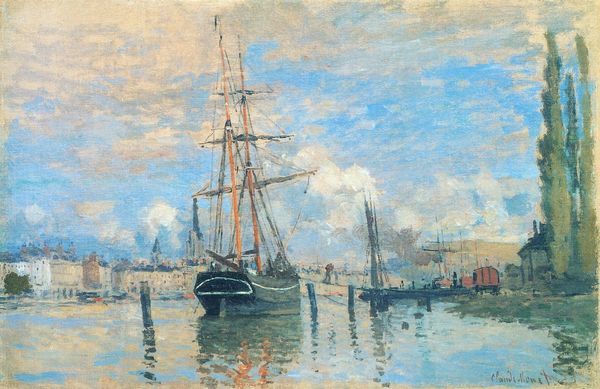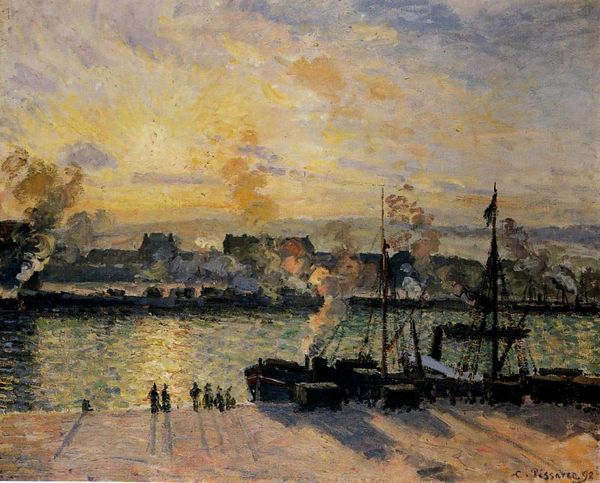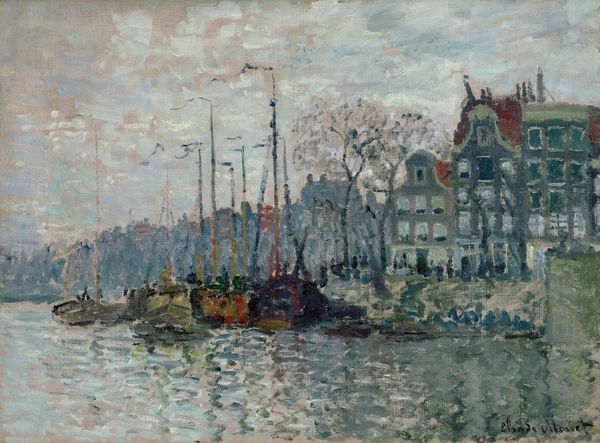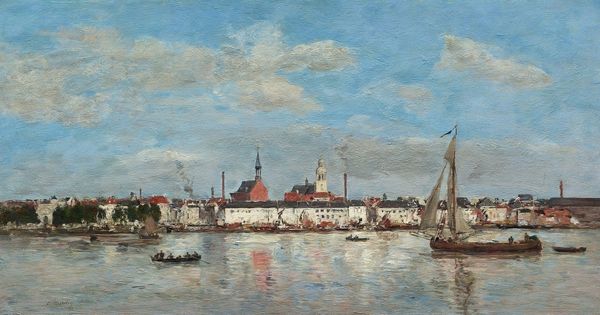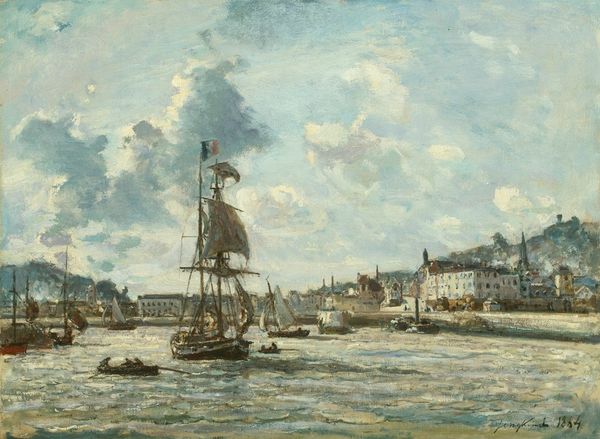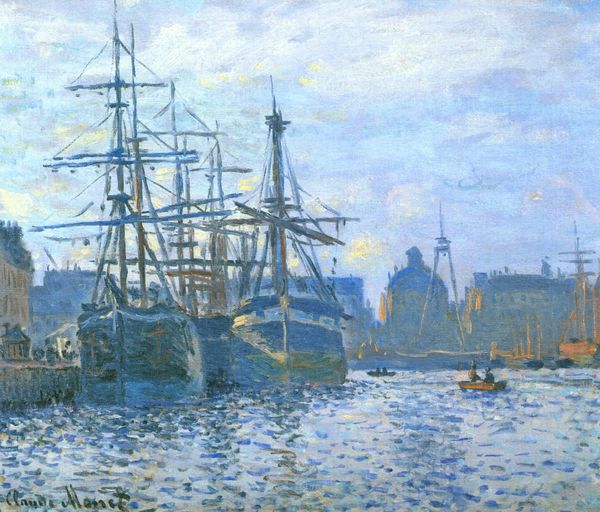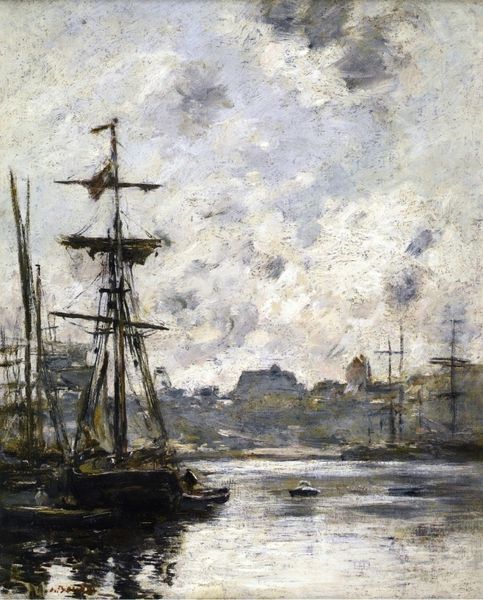
Copyright: Public Domain: Artvee
Curator: Johan Barthold Jongkind’s “Le Port De Dordrecht Au Clair De Lune,” painted in 1868, presents us with a nocturnal cityscape rendered in oil on canvas. It's an evocative image, a scene brimming with mood and light. Editor: It’s captivating. I'm immediately struck by the shimmering moonlight on the water, that dreamy, almost ethereal quality. The subdued palette creates such a serene, melancholic atmosphere. Curator: Jongkind was a key figure in the transition from the Barbizon School to Impressionism, often painting en plein air. You see it here in the direct observation of nature and light, although still grounded in a certain representational accuracy. Dordrecht was an important port city. He actually was attempting to capture a specific place. Editor: It's true, there’s a commitment to place, but it's also about emotion. Those figures clustered on the dockside seem like isolated individuals, despite their proximity. Is it commentary on burgeoning industrialisation perhaps? The city, once a source of community, is rendered in cooler shades that evoke feelings of melancholy in the period of industrial revolution, in a new era. Curator: Possibly. Cityscapes during that time are filled with growing cities, which is very exciting. He had a fascinating, but tortured biography too, and his internal conflicts might speak to your melancholic feeling looking at the image. I can imagine such a thing affected his portrayal of the world around him, especially when his mental illness led to long periods of hospitalisation. Editor: It definitely resonates. There’s a visible tension between romanticizing the past and acknowledging the realities of his present, or perhaps that of a shifting society overall. Even in his treatment of the light – its both romantic, with the effect, but in the texture of its application it looks quite contemporary to us. Curator: Well said. Considering the art market in the 19th century, especially the Paris Salon, it is understandable that his work treads the line, never fitting in. In these market contexts the Dutch tradition still had purchase and viewers also wanted the effects which could evoke sentiment. Editor: Ultimately, the power of “Le Port de Dordrecht Au Clair De Lune” resides in its ability to evoke complex emotions and raise these difficult questions, all through a veil of striking beauty. It acts as both a painting of the real and representation of complex inner conditions and anxieties. Curator: Yes, it's a fascinating piece that bridges tradition and modernity, and prompts a very thoughtful reaction. It is hard to decide on my overall sentiments!
Comments
No comments
Be the first to comment and join the conversation on the ultimate creative platform.
